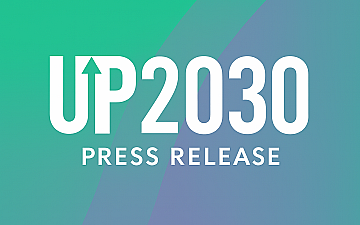The annulment of the 1973 U.S. Supreme Court’s decision on the case Roe v. Wade, which declared the right to abortion a constitutional right across the USA, led to a wave of disinformation on the Internet. However, it should be clarified that abortion is not prohibited in every state of the USA. Instead, the court gave the individual states the right to decide whether to ban abortion on their territory.
Although the decision to abolish 50 years of constitutional protection of the right to abortion has been taken by only six to three votes by the Supreme Court judges, it turns out that the majority of American citizens believe that abortion should be legal in most cases. Thus, according to a survey conducted by the PEW RESEARCH CENTER, nearly one in five adult Americans believe that abortion should be legal in all cases, while less than 8 per cent consider that abortion shall be declared entirely illegal, without any exceptions. On the other hand, 71 per cent of Americans declare to be more moderate in their positions, with some of them indicating that abortion should rather be legal, while others tend to adopt the opposite opinion. Moreover, some citizens state that there are exceptions which make them unable to take a firm stance “for” or “against” the legality of abortion.
Since the ruling, there has been a wave of violent reactions, both consisting in the organisation of protests against the decision of the Supreme Court as well as in the spreading of a number of videos containing disinformation. In this regard, after the company “UltraViolet” sent an open letter, the platform YouTube started to remove videos which contained disinformation regarding abortions. The campaign itself is aimed at removing videos that share different ways to perform an abortion outside hospital buildings or under no medical supervision. According to UltraViolet, the open letter has been sent due to the fact that a large number of tech companies, including YouTube, Twitter, TikTok and Meta, generate a significant amount of funds on the basis of videos which contain disinformation.
Such disinformation consists of the spread of information concerning dangerous abortion methods, as well as videos recommending the use of toxic herbs for the termination of ongoing pregnancy. This content mainly affects young people, as they are the part of society that uses social networks the most and therefore tend to believe content disseminated through them.
Melissa Fowler, Chief Program Officer at the National Abortion Federation, told Reuters that “the new policy of YouTube is a step in the right direction.” More specifically, Fowler stated:
“We need to hold the platform accountable and ensure that the persons seeking information regarding the abortions are not subject to any kind of medical disinformation or misleading content”, she said in an interview. “People should be able to trust the content on the platforms, especially regarding the places where they can get accurate information concerning the performing of abortion, as well as the possible options.”
Not for the first time, YouTube has implemented such a strategy to tackle disinformation, with other similar campaigns being launched due to the Covid-19 pandemic. Yet, this time, in addition to YouTube’s policy, Google announced in a blog post that it would delete videos depicting specific sensitive locations, such as abortion clinics if its systems determine that a person has visited one of those places after he became acquainted of the content of such videos. The reason for the actions taken by Google roots in the fact that, after the U.S. Supreme Court annulled the decision guaranteeing the right to abortion, women turned out to be at risk, as the law enforcement authorities could use their digital footprint in the cases where, for example, they search for abortion clinics on the Internet.
According to Callum Hood, Head of Research at the Center for Countering Digital Hate (CCDH), “tech companies cannot claim that they treat the abortion disinformation seriously until they address the issue in all of its aspects.” This includes the obligation to take action on misleading advertisements for “fake abortion clinics” and content promoting “unproven or potentially dangerous treatments” for the termination of pregnancy.
In addition, disinformation on abortion is a serious issue in Europe as well, amplified by the fact that some European countries have introduced a complete ban on abortion in the absence of medical reasons (e.g. Poland, Malta, etc.) and in view of the growing nationalist sentiment advocating a restriction of abortion rights. For example, in 2022, several members of the European Parliament called for action against such disinformation concerning abortions. This came after an investigation initiated by the organisation openDemocracy found that pregnancy crisis centres deliberately spread misleading information, including among pregnant women seeking an abortion, such as false claims that the abortion increases the risk of cancer or that it enhances the aggressive parental behaviour towards children.
After all, disinformation regarding abortion is taking an increasingly high toll, as besides its influence on the decision of many pregnant women, it has managed to significantly influence public opinion and attitudes, which often outlines the sanctioned right to abortion as the main culprit for the ongoing demographic crisis. In view of the above, over the past year, a discussion has started on a European level on whether the right to abortion shall be set out in the Charter of Fundamental Rights as well as in other strategic documents in order for comprehensive protection of the rights and interests of pregnant women to be provided. In this sense, perhaps we should ask ourselves the following question: How far would we be willing to go if we decide to use every possible means, including spreading disinformation, to restrict the rights of others or force them to restrict such rights by themselves?









